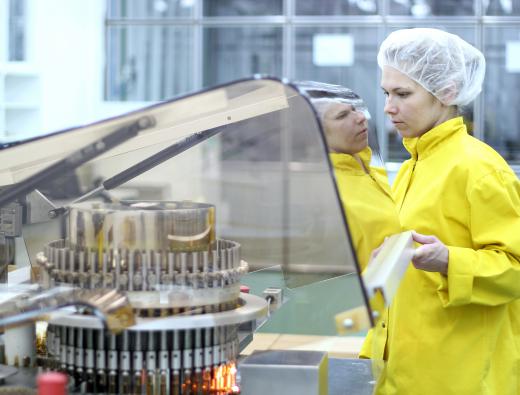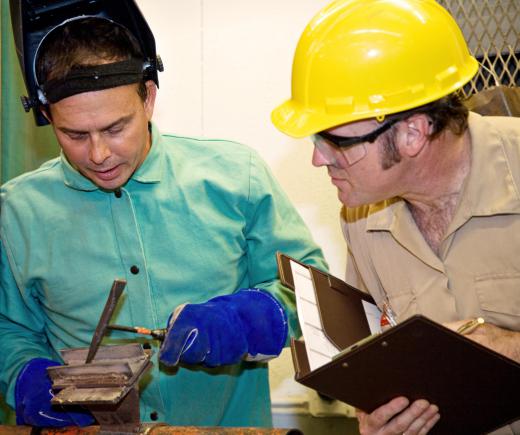Quality control tools can measure the finish of a machined surface, the alignment of multiple components and the thickness of a paint job. Often nothing more than a simple go or no-go gauge, quality control tools are used to take readings from random pieces of an assembly run. The most basic of all quality control tools is the micrometer. These quality control tools are used to measure the thickness of a machined part and ensure that it falls within specifications.
As with most machined or tooled components, a plus or minus rule applies to the roughness tolerances of the finished surface. Workers will typically be instructed to take readings on a specific number of parts per component run. This allows the machinist to make required adjustments to the machinery in order to maintain strict tolerances of the finished parts. Using quality control tools, the machinist will observe the readings of the selected parts and adjust the machinery to maintain the proper finish readings. Quality control personnel will often use different quality control tools to measure not only the finish tolerances of the machined parts but also the accurateness of the operator's testing devices.

In mechanisms such as clocks and transmissions where multiple gear sets are used to complete an assembly, special quality control tools or jigs that resemble the finished product are created using extra heavy material. The heavier material assures no bending and misalignment as the workers test-fit sub-assemblies into position. Once in position on the special jig, the parts are measured for proper alignment. This allows workers to adjust machinery as needed to ensure proper gear alignment and prevent future gear damage in the completed component. Some of these quality control tools use an electric or hydraulic motor to actually operate the part of the assembly that is being checked for quality.

In some painting plants, the thickness of paint being applied to a product is measured with magnetic quality control tools. These tools use a magnet fastened to a ruler type instrument with a pointer indicator attached. The magnet is placed on a spot to be measured and gently pulled up. The pointer moves down the gauge and reflects the amount of pressure that the magnet requires in order to be pulled free. This number is matched to a chart detailing the indicated amount of pressure that a proper thickness of paint would require before a magnet could be pulled free.
